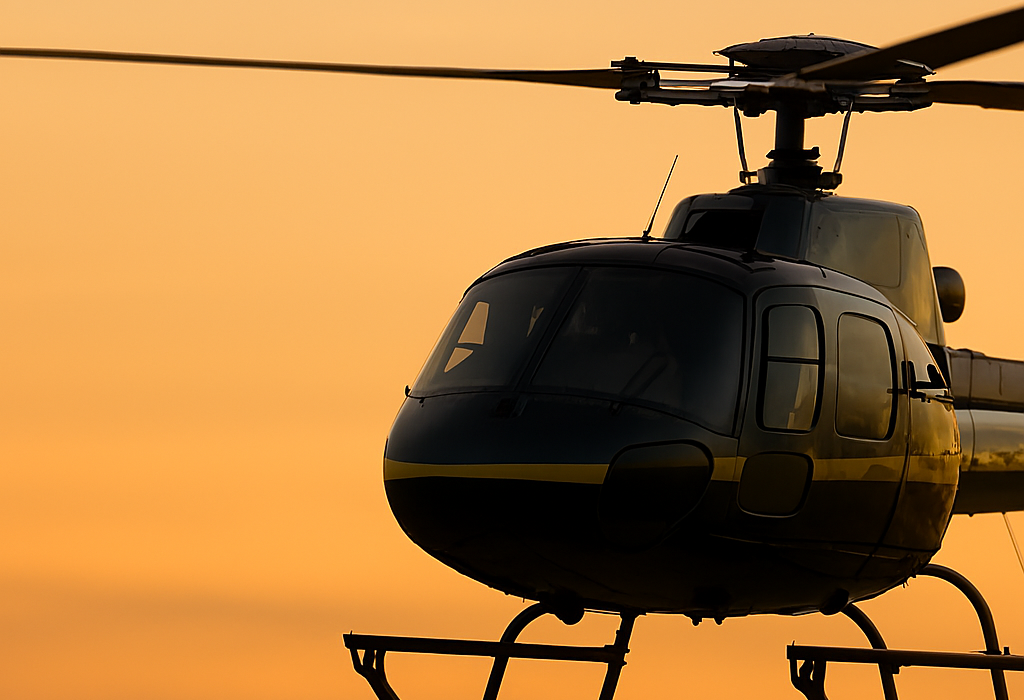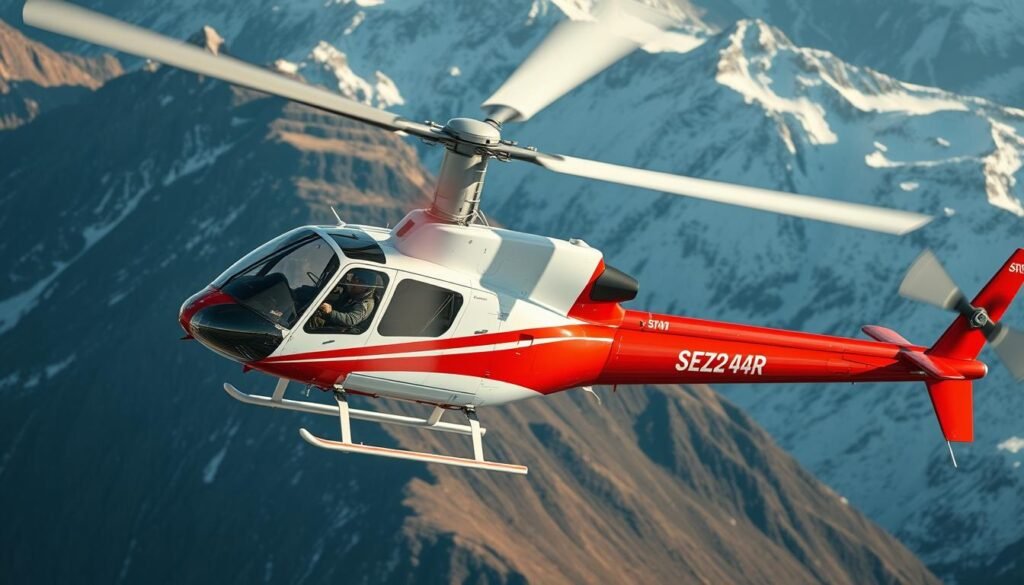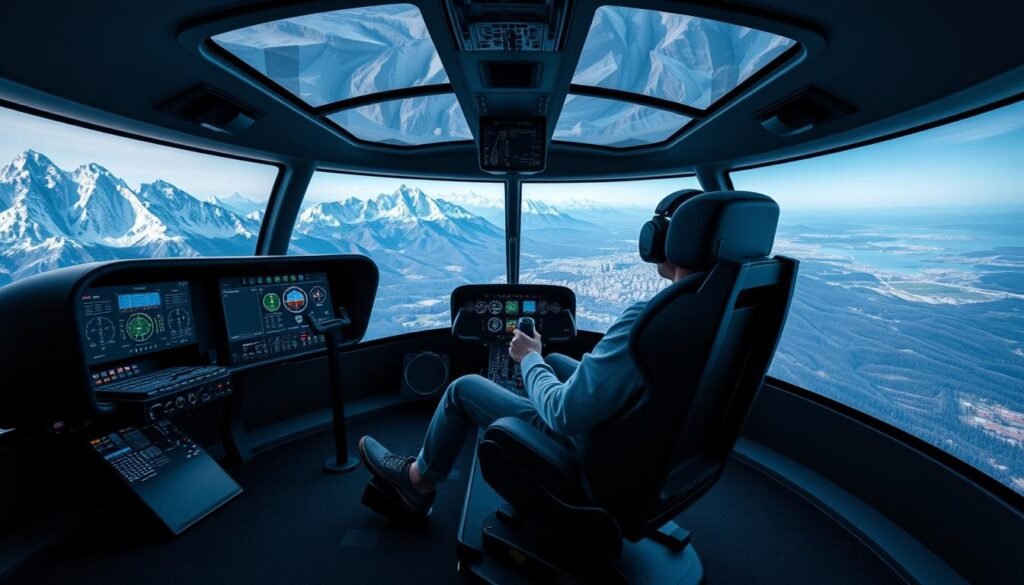Whether you’re dreaming of flying rescue missions, inspecting powerlines, or transporting VIP clients, every helicopter career begins with the right training and certifications. This guide breaks down the essential steps, compares program types, and highlights the credentials that unlock higher-paying roles — while also diving into real-world timelines, aircraft types, regional factors, and student challenges.
⏳ Step-by-Step: How Helicopter Pilot Training Works
Most pilots follow a phased approach to training, building skills and certifications in stages:
| Phase | License/Rating | Description | Flight Hours |
|---|---|---|---|
| 1 | Private Pilot License (PPL-H) | Teaches basic flight maneuvers, navigation, and safety | ~40–60 hrs |
| 2 | Commercial Pilot License (CPL-H) | Required for paid flying jobs; includes advanced maneuvers | ~150–200 hrs total |
| 3 | Instrument Rating (IFR) | Enables flight in low-visibility conditions | ~15–20 hrs |
| 4 | Certified Flight Instructor (CFI/CFII) | Allows you to teach others while building hours | ~25–50 hrs |
| 5 | Additional Endorsements | NVG, Long-Line, ATP, etc. | Varies by mission type |
Fast-track programs may compress this into 12–18 months, while part-time students often take 2–3 years. Military-trained pilots may enter civilian roles with advanced ratings already in hand.
🧑✈️ Case Studies: Pilot Journeys That Inspire
🔄 Career Switcher: From IT to Tour Pilot
Marcus, a 34-year-old systems analyst, trained part-time at a Part 61 school in Arizona. He earned his CPL-H in 18 months and built hours as a CFI. Today, he flies Grand Canyon tours and mentors new students.
🎖️ Military-to-Civilian Transition
Samantha flew UH-60 Black Hawks in the Army. After discharge, she used her GI Bill to convert her military experience into civilian ratings. She now flies EMS missions in the Midwest, leveraging her NVG and IFR skills.
🎓 College-to-CFI Pipeline
Jake joined a university-affiliated Part 141 program in Florida. He earned a degree in aviation science alongside his ratings. By graduation, he had 250 hours and a job offer as a flight instructor at the same school.
🏫 Types of Training Programs
1. Part 61 Schools
- Flexible, often smaller operations
- Ideal for self-paced learners
- May take longer to complete
- Often more affordable
2. Part 141 Schools
- FAA-approved curriculum
- Structured timelines and lesson plans
- May qualify for VA benefits or college credit
- Often used by university-affiliated programs
3. University-Affiliated Programs
- Combine flight training with a degree
- May offer financial aid or scholarships
- Ideal for long-term career planning
- Often Part 141 certified
4. Military Pathways
- Training provided during service
- May lead to civilian certifications post-service
- Eligible for GI Bill benefits
- Highly respected by employers
🚁 Helicopter Types Used in Training
| Aircraft | Description | Pros | Cons |
|---|---|---|---|
| Robinson R22 | 2-seat piston | Affordable, widely used | Sensitive controls, weight limits |
| Robinson R44 | 4-seat piston | More stable, better for hour-building | Higher cost per hour |
| Bell 206 JetRanger | Turbine-powered | Prepares for commercial ops | Expensive, not used in early training |
| Schweizer 300 | 2-seat piston | Smooth handling, good visibility | Less common, fewer parts available |
| Enstrom 280FX | 3-seat piston | Enclosed tail rotor, stable | Heavier, less nimble than R22 |
Most students start in the R22 or Schweizer and transition to the R44 or turbine aircraft as they progress. Schools with diverse fleets offer better prep for real-world missions.
🏔️ Regional Training Considerations
Geography affects training quality, flight conditions, and job prospects. Here’s how location plays a role:
🏜️ Southwest (Arizona, New Mexico)
- Clear skies, low air traffic
- Ideal for fast-track programs
- Dry heat can affect aircraft performance
🏔️ Mountain Regions (Colorado, Utah)
- High-altitude training
- Valuable for utility and SAR careers
- Weather variability requires strong planning skills
🌴 Coastal Areas (Florida, California)
- Year-round flying
- Diverse airspace and terrain
- Popular for tour and corporate prep
🌲 Pacific Northwest
- IFR and weather training
- Forested terrain ideal for long-line practice
- Seasonal limitations
⚠️ Common Student Challenges (and How to Overcome Them)
🤢 Motion Sickness
- Common in early flights
- Solutions: ginger chews, hydration, gradual exposure
- Usually fades after 5–10 hours
💸 Financing
- Helicopter training is expensive
- Options: GI Bill, Sallie Mae loans, school financing plans
- Tip: Start with PPL-H before committing to full career track
📚 Written Exams
- FAA knowledge tests can be intimidating
- Prep tools: online ground school, flashcards, study groups
- Many schools offer in-house tutoring
🧠 Skill Plateaus
- Students often hit a wall around 30–50 hours
- Solutions: simulator time, instructor change, rest breaks
- Confidence returns with consistent practice
🧭 Career Uncertainty
- Not sure which path to pursue?
- Tip: Get exposure to EMS, tours, utility ops early
- Use school alumni networks to explore options
📜 Certifications That Boost Your Career
| Certification | Opens Doors To |
|---|---|
| IFR Rating | EMS, law enforcement, corporate transport |
| NVG Endorsement | Night EMS, SAR, tactical ops |
| Long-Line Training | Utility, firefighting, construction lift |
| ATP Certificate | Chief pilot roles, multi-engine operations |
| CFI/CFII | Instruction, hour-building, mentoring roles |
💰 Cost Breakdown
| License/Rating | Typical Cost Range |
|---|---|
| Private (PPL-H) | $15,000–$25,000 |
| Commercial (CPL-H) | $30,000–$50,000 |
| Instrument Rating | $10,000–$15,000 |
| CFI/CFII | $8,000–$12,000 |
| Full Career Track | $70,000–$100,000+ |
Note: Costs vary by location, aircraft type, and school structure. Some programs offer bundled pricing or financing options.
🧭 Next Steps: Chart Your Course Toward the Skies
Whether you’re just starting to explore helicopter careers or already comparing flight schools, here’s how to move forward with clarity and confidence:
1. Define Your Aviation Goals
- Are you aiming for a private license, commercial career, or specialized role (like aerial firefighting or medevac)?
- Jot down your motivations — they’ll help guide your training choices and budget planning.
2. Research Accredited Flight Schools
- Use our Helicopter Training Cost Comparison Chart to compare tuition, location, and program length.
- Look for FAA-approved Part 141 or Part 61 schools, depending on your learning style and timeline.
3. Understand the Financial Commitment
- Training costs range from $15,000 to $70,000+ depending on your goals.
- Explore financing options: scholarships, GI Bill benefits, or school-specific payment plans.
4. Schedule a Discovery Flight
- Most schools offer a low-cost intro flight — it’s the best way to experience helicopter controls firsthand.
- Ask questions during the visit: instructor experience, fleet maintenance, student support.
5. Bookmark Key Resources
- Helicopted.com’s Career Guides — deep dives into pilot roles, salary expectations, and licensing paths.
- Training Cost Breakdown — transparent insights to help you budget wisely.
📈 Career Outlook & Continuing Education
🚁 Career Outlook
- Demand is rising for helicopter pilots in EMS, utility, and offshore sectors
- Emerging roles in drone integration and hybrid aircraft
- Salary growth tied to ratings, hours, and mission type
📚 Continuing Education
- Recurrent training requirements (e.g., annual checkrides, safety refreshers)
- Advanced certifications (NVG, ATP, mountain flying)
- Transitioning to multi-engine or fixed-wing roles
🔗 Related Resources
🧠 Common Misconceptions & FAQs About Becoming a Helicopter Pilot
Even seasoned aviation enthusiasts get tripped up by outdated info or half-truths. Let’s clear the air:
❌ Do I need perfect vision to become a helicopter pilot?
Nope. You don’t need 20/20 vision without correction. As long as your vision can be corrected to meet FAA standards (typically 20/40 or better), you’re eligible. Glasses or contacts are perfectly acceptable.
❌ Is military experience required?
Not at all. While some pilots enter aviation through military service, many train privately through civilian flight schools. You can start from scratch with no prior aviation background.
❌ Is helicopter training only for young people?
Definitely not. Students range from recent high school grads to career changers in their 40s, 50s, and beyond. If you’re medically fit and motivated, age isn’t a barrier.
❌ Do I need a college degree?
No degree required. Most flight schools focus on flight hours, certifications, and practical skills. That said, some employers may prefer candidates with degrees in aviation or related fields.
❌ Is it true that helicopters are harder to fly than airplanes?
They’re different, not necessarily harder. Helicopters require more coordination and constant input, but with proper training, most students adapt quickly. Your instructor will guide you step by step.
❓ How long does it take to become a licensed helicopter pilot?
- Private Pilot License (PPL-H): ~40–60 flight hours (2–6 months full-time)
- Commercial License (CPL-H): ~150–200 flight hours (6–12 months full-time)
- Timelines vary based on school, weather, and your availability.
❓ Can I train part-time while working?
Yes. Many schools offer flexible schedules, weekend lessons, or modular programs. Just keep in mind that consistency helps with skill retention and progress.
📥 Explore More on Helicopted.com
Ready to chart your flight path? Dive into our Helicopter Pilot Salary Guide, compare training costs, or browse top schools by region. Helicopted.com is your co-pilot for every step of the journey.



